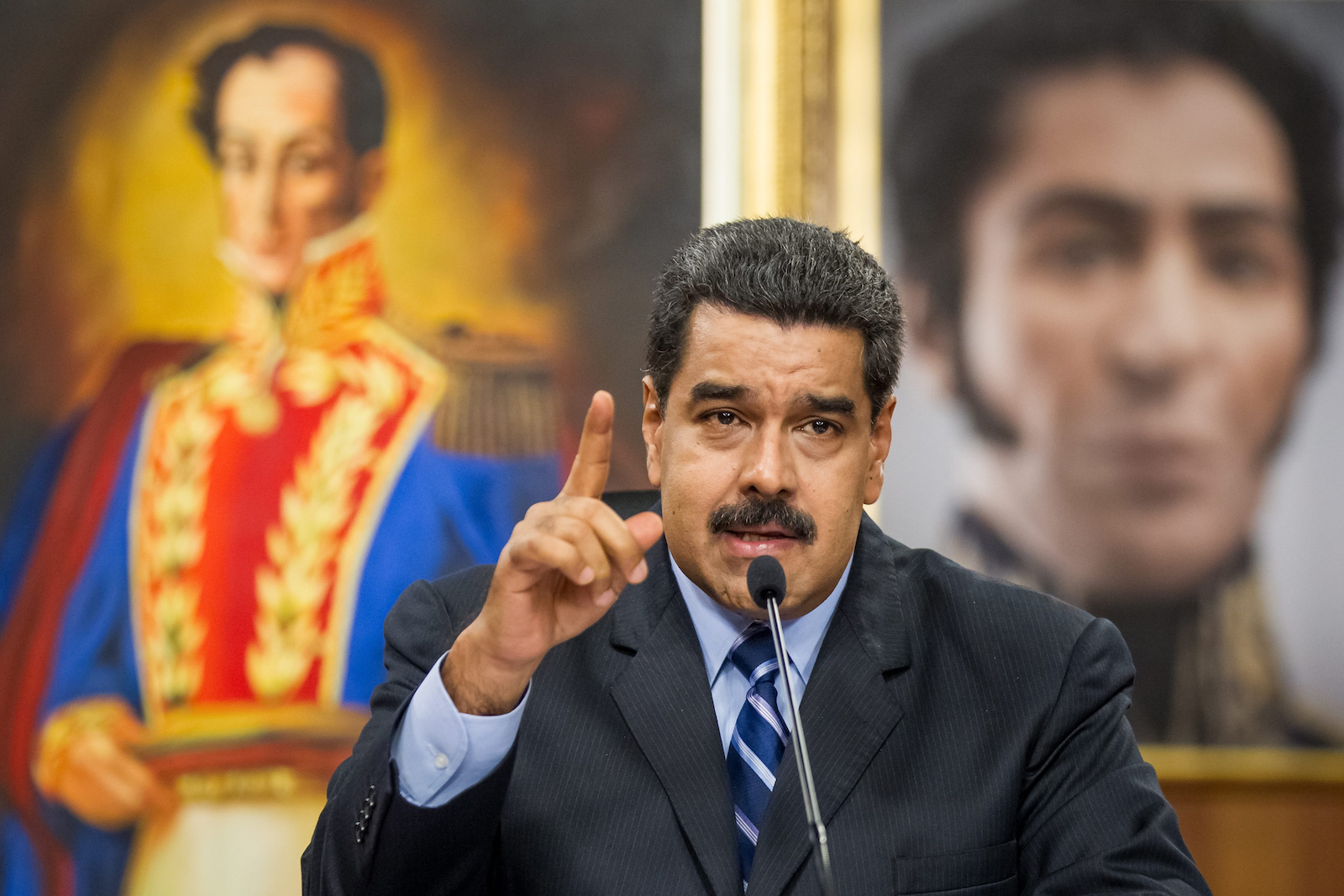
Petro-Diplomacy: Venezuela, Iran, and the U.S.
In welcoming Mahmoud Ahmadinejad, Iran’s former president, to Venezuela on November 25, 2009, Hugo Chávez described Ahmadinejad as “the gladiator of anti-imperialist struggles.” A clear indicator of the symbiotic relationship between the two petroleum-exporting states. Venezuela and Iran form an unconventional partnership made up of various bilateral agreements, joint operations, and mutual animosity towards the United States, intergovernmental organizations, and human rights. Given Venezuela’s geopolitical instability and the likelihood of increased sanctions on both Venezuela and Iran, Venezuela’s relationship with Iran will undoubtedly strengthen.
Venezuela is one of the world’s largest exporters of petroleum and one of the founding members of OPEC. By the time of the OPEC’s formation, Venezuela was fairly well off. The country produced more than 10% of the world’s crude oil and had a larger GDP than most Latin American countries. Venezuela was seeking to diversify its economy since it wanted to avoid becoming a rentier state like Iran. Although Venezuela had plans to diversify its economy, that all changed in the 1970s.
Fast forward to the 1990s, Venezuela got hit with a collapse of oil prices in 1998 and the presidency of Hugo Chávez. Chávez ran on the promise to restore Venezuela’s economy by attacking the meritocracy at PDVSA, in order to exert his control over the state-owned company and maximize its revenue for his socialist agenda. His ignorance about everything that had to do with oil led to him spending all the revenues on his social and international assistance programs. This resulted in a lack of investment in newer technology that could refine heavy Venezuelan oil, which the U.S. and other oil-producing countries had at the time. This led to a spike that increased the income of the Venezuelan economy but led to the undermining of the utility of oil revenues as an instrument for foreign policy in the 2000s.
When oil strategies fail
In Venezuela, the Chávez administration used high oil prices to gain revenue for his populist policies and gain support from his workers, leading to overspending in social programs, shortages in Venezuela, rising inflation, increase in poverty rates, and low healthcare. Since the death of Chávez in 2013 and current President Nicolás Maduro’s policies, oil production in Venezuela has suffered tremendously, reaching the lowest production of oil and the highest inflation rate in the world. As a result of the current humanitarian crisis and increase in shortages, Venezuelan workers have not been able to perform their work because of malnourishment, reflecting a need for both a change in regime and restructuring of the economy.
Similarly, Iran has produced less oil since the 1979 revolution, struggling to maintain production over 3.5 million barrels per day. Its fluctuations in revenues led to deficits and period of high inflation, and its misuse of oil revenues caused long-term economic problems. Under President Mahmoud Ahmadinejad’s rule, Iran also embarked on a populist spending program, which caused a fall in imports and foreign exchange shortfalls. Current President Hassan Rouhani took office in 2013 and prioritized reforming the oil and gas sector, but since the May 2018 sanctions by the United States and the U.S.’s withdrawal from the Joint Comprehensive Plan of Action (JCPOA), Iran’s crude oil exports and production have declined.
Venezuela-Iran Relations
In order to explain Venezuela’s relations with Iran, one must consider both Venezuela’s soft balancing of the United States and the extra hemispheric policies with other authoritarian regimes, including Russia and China. The main four policy objectives under Chávez was finding allies that could help Venezuela soft balance the United States, acquiring a large supply of weapons, identify trading partners that do business through state-owned companies, and aligning with foreign governments not held accountable to any democratic mechanism. This led to the rapprochement between Venezuela and Iran in 2005 and becoming Iran’s closest ally in the region, which first started with the 2005 elections of Iran’s President Mahmoud Ahmadinejad.
Both Ahmadinejad and Chávez visited each other multiple times, signing more than 270 bilateral deals to support multiple Venezuelan campaigns for social and infrastructural national development. This tie also provided arms and ammunition, which further alarmed the United States with fears of developing nuclear capacities in Latin America.
The close connection that Venezuela and Iran have is through cooperation around petroleum. Iran’s state-owned company, Petropars, signed an agreement with PDVSA to explore and extract oil in Venezuela’s Orinoco Belt in 2006. The cooperation between Caracas and Tehran enraged the United States, specifically with the non-transparency of their relationship and the unsavory actions produced from it. The actions included allowing terrorists to go through Venezuela, supplying weapons and cash transfers to each other, and permitting Hezbollah to finance their operations through the drug trade. In 2007, Iran and Venezuela established a bank called the Banco Internacional de Desarrollo in Caracas, now owned by the Export Development Bank of Iran (EDBI), with the Bank Toseyeh Saderat as a major Iranian shareholder. This action could be considered one of the most important security concerns for the United States and thus led to an increase in U.S.-led efforts to prevent Iran’s nuclear program and sponsorship of international terrorism.
Nevertheless, these efforts are clearly failing, as the U.S. imposes more sanctions on its adversaries, while Iran gains traction by becoming their ally. With the most recent sanctions on Iran’s central bank in 2011, which handles Iran’s oil revenues, Venezuela criticized the United States during another visit by Ahmadinejad to Caracas by stating that “A spokesman or spokeswoman in Washington from the State Department or the White House said it was not convenient for any country to get close to Iran. Well, the truth is, it made you laugh…We are free. The people of Latin America will never again kneel, dominated by the imperial Yankee. Never again.” By presenting this anti-U.S. rhetoric during the period of high tensions, Chávez defiantly justified his relationship with Iran as a partnership against a common evil.
The future is murky
By imposing more sanctions on the two oil-producing giants, the United States is just pushing them to help each other and send oil prices soaring, which is a win for both Iran and Venezuela. Since China and India are the biggest buyers of Iranian crude and provide markets for over 40% of Venezuela’s exports, the two Asian countries would probably have to replace lost barrels with sales from other members of OPEC, including Saudi Arabia, or even Russia. Even though China and India are not directly involved with the sanctions imposed on Venezuela and Iran, they could turn to Russia as a major oil supplier, further upsettings the U.S. Any sanctions that the United States imposes on Iran would take more oil off international markets, further reducing Iranian exports of at least 200,000 barrels a day by next year. However, Chinese and Russian traders could buy Iranian crude through cryptocurrencies at discounts or trade the shipments on global markets. It was recently proposed that Iran might be investing in research transactions, according to Mohammad Reza Pourebrahimi, the head of the Iranian Parliamentary Commission for Economic Affairs, who recently spoke about international payment systems.
Venezuela has also reportedly received help from Moscow and also launched a new cryptocurrency called Petro, that President Maduro described as “kryptonite” against the U.S. government. Russia continues to pour money through the new cryptocurrency initiative into the unstable government as it picks up cheap oil fields. If Venezuela’s government collapses, it will jeopardize the payment of more than $50 billion in loans to China and the future of oilfield acquisitions by Rosneft. Russia may attempt to pick up additional land in Venezuela, by supporting the Venezuelan military, and destroy PDVSA, which may lead to President Maduro stepping down. Russia will benefit from any rise in oil that comes from the reduction of global supplies and catapults it to increase oil field acquisitions in Venezuela.
Given Venezuela’s unstable socioeconomic and political future and U.S. sanctions on both Iran and Venezuela’s exportation of crude oil, Venezuela and Iran’s export profitability in Asia will be much bigger than attempting to reestablish business ties with the U.S. The U.S. already has traction within the OPEC, given its alliance with Saudi Arabia. However, Russia was the third largest producers of oil in 2017 with only less than 1 million barrels per day than Saudi Arabia. This gives traction to Russia under OPEC and securing ties with Venezuela, and maybe even Iran, in an unconventional alliance. Iran has stressed the need to create new mobility and economic relations between the two countries, by stating that Venezuela needs to reduce its dependence on oil and increase perseverance in resisting sanctions.
Therefore, the United States of America should consider that an intervention in the downfall of President Maduro, similar to the 1953 coup d’état in Iran, will increase anti-U.S. sentiments in the region and discredit the democratic transition of power in Latin America. Venezuela should use Iranian, Russian, and Chinese investments to develop renewable energy and ultimately diversify its economy. Finally, though limited with the current political situation, Iran should also diversify its economy and plan to shift to renewable energy and new technology for the sake of both climate change and its future relationship with Venezuela and the United States of America.

